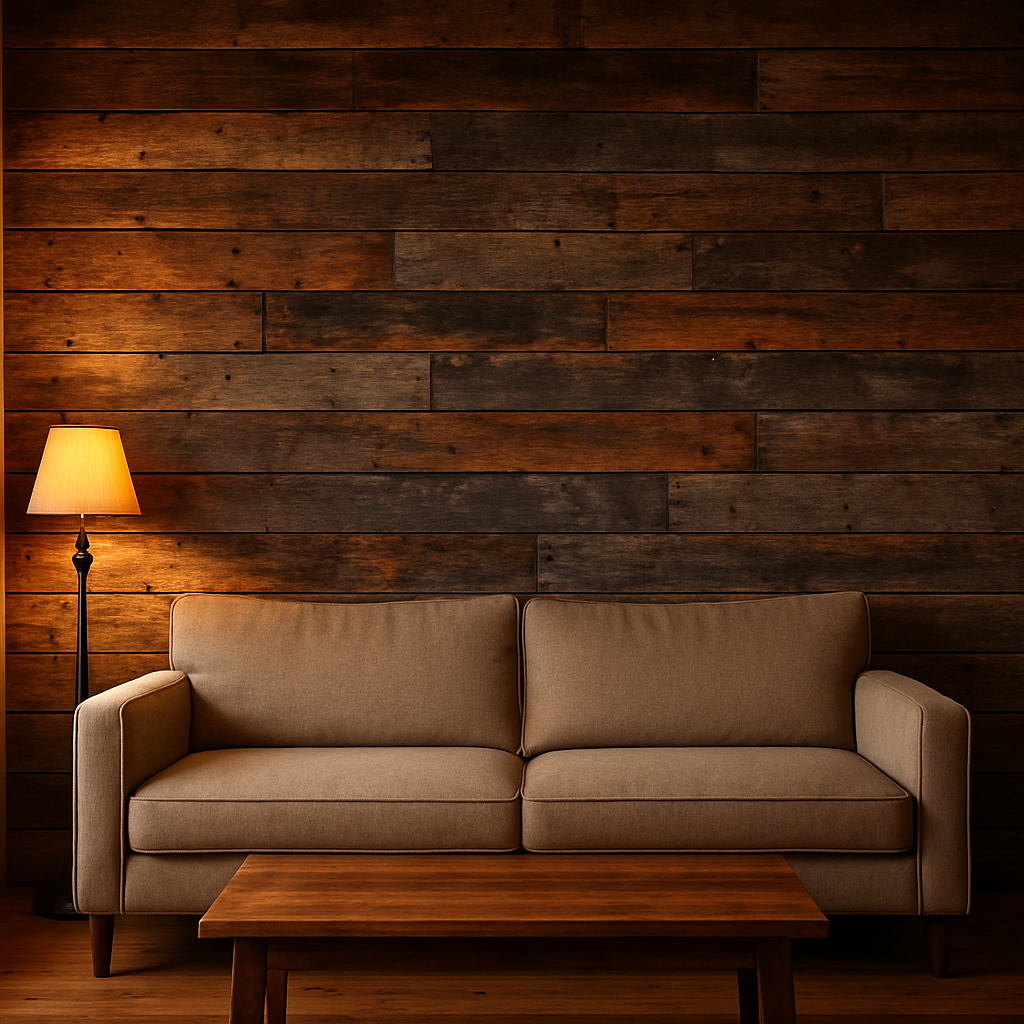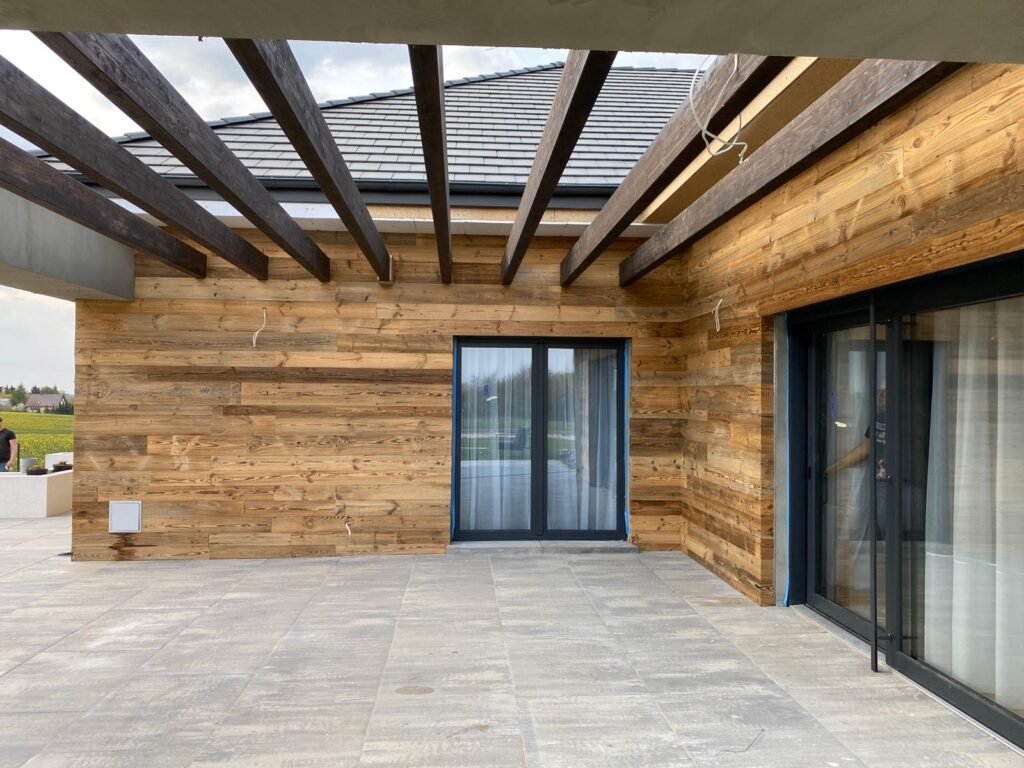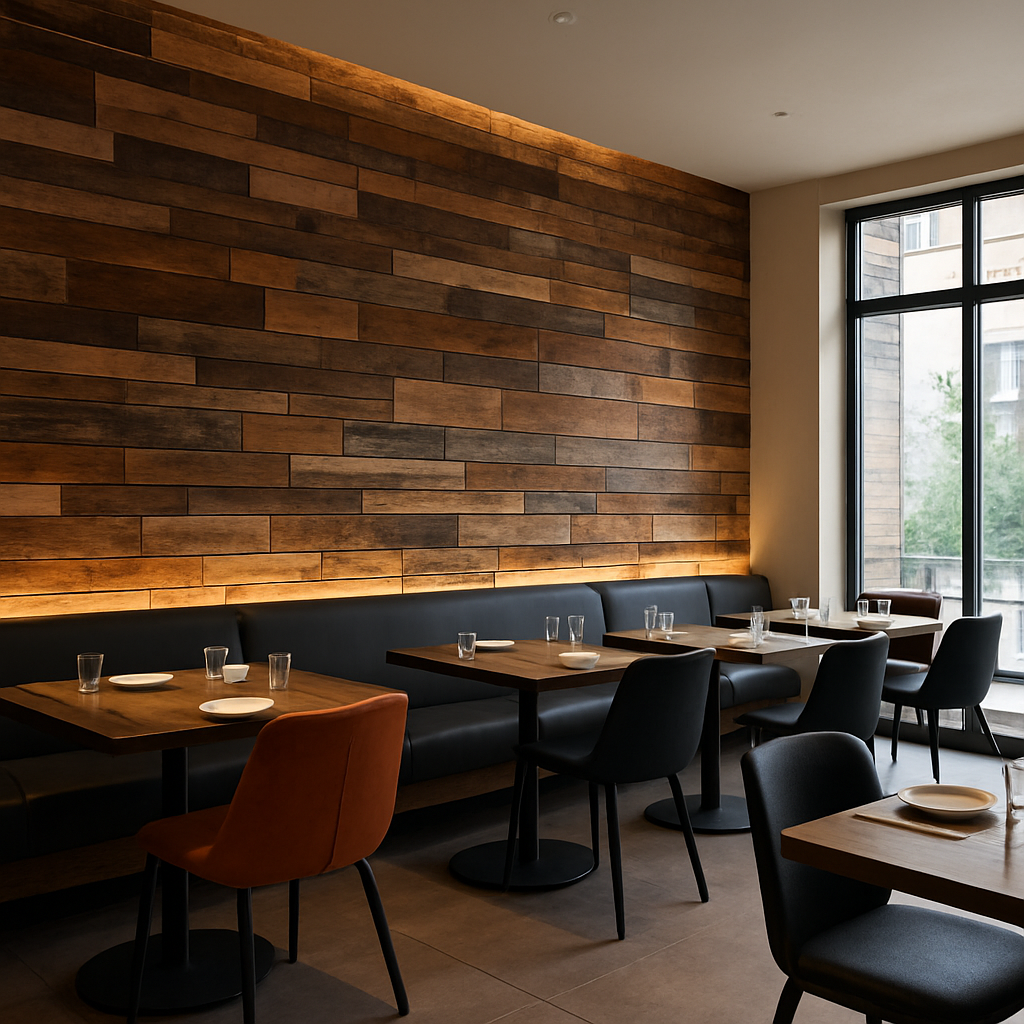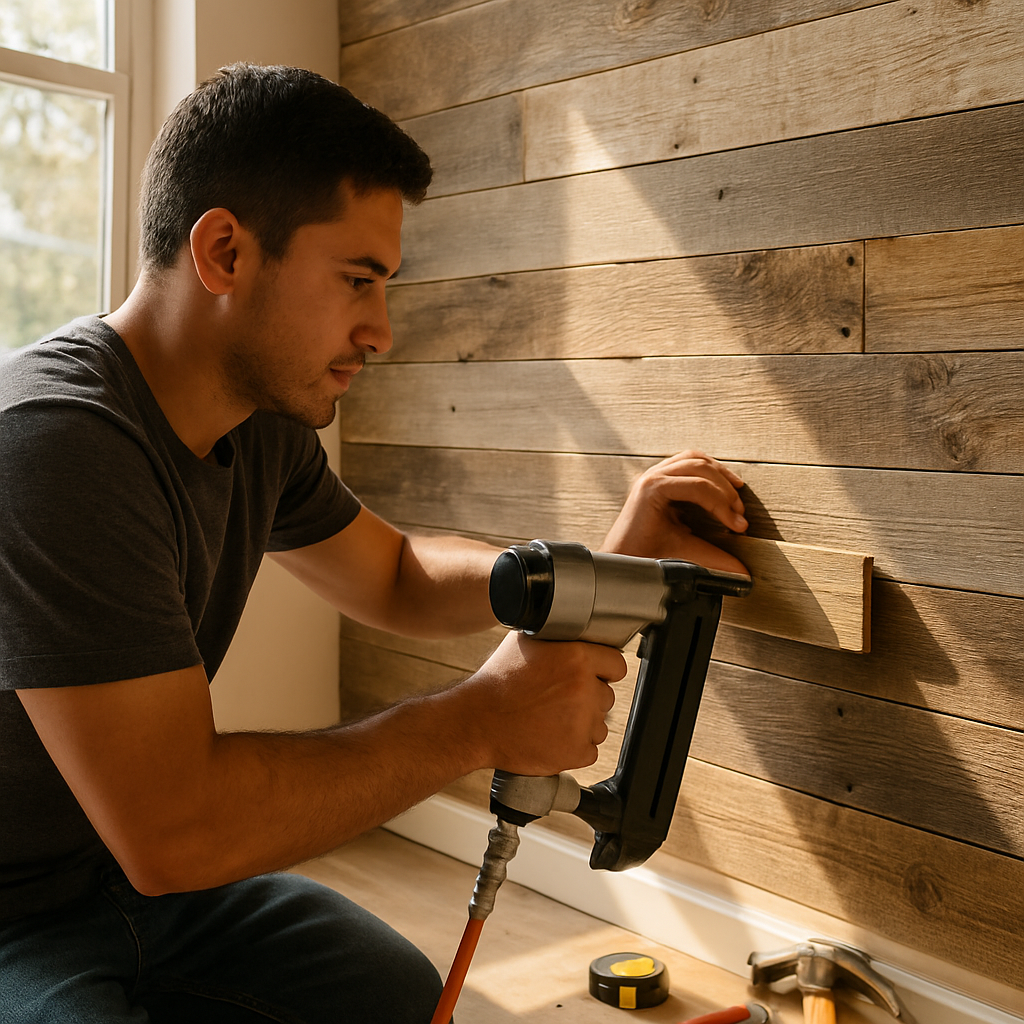In a world increasingly concerned with sustainability and authentic design, reclaimed wood cladding stands at the intersection of environmental consciousness and timeless aesthetics. This versatile material—salvaged from old barns, factories, warehouses, and even wine casks—brings history and character to spaces while reducing the demand for virgin timber. As architects, designers, and homeowners seek materials that tell a story while treading lightly on the planet, reclaimed timber has emerged as a premier choice for wall treatments in both residential and commercial settings.
Beyond its striking appearance, reclaimed wood cladding represents a circular approach to construction materials—giving new life to timber that might otherwise be discarded while preserving the unique patina and character that only decades or centuries of use can create. The environmental benefits are substantial, from carbon sequestration to reduced logging pressure on forests, making this material as responsible as it is beautiful.
Throughout this article, you’ll discover what exactly constitutes reclaimed wood cladding, explore its numerous environmental and aesthetic benefits, learn about diverse design applications across various architectural styles, and gain insights into proper installation and maintenance techniques to ensure your sustainable choice stands the test of time.
What is reclaimed wood cladding?
Reclaimed wood cladding refers to wall covering or exterior siding made from timber that has been recovered from previous structures or uses. Unlike virgin wood harvested directly from forests, reclaimed materials carry history in their grain—weathered textures, nail holes, saw marks, and color variations that tell the story of their previous life.
Sources of this sustainable wood cladding are wonderfully diverse. Barnwood remains among the most popular, offering rich patinas and weathered gray tones from decades of exposure. Industrial buildings provide massive beams and planks, often from old-growth forests no longer harvested today. Other common sources include wine and whiskey barrels, river-recovered logs, old shipping crates, railroad ties, and even gymnasium flooring.
The species variety is equally impressive, with oak, pine, hemlock, redwood, and Douglas fir being particularly common in North American reclaimed timber cladding. European sources might include spruce, larch, and chestnut. Each brings unique coloration and grain patterns that contribute to the distinctive character of the finished installation.
Origins and sourcing of reclaimed wood
The journey of reclaimed timber begins with careful deconstruction rather than demolition. Specialised salvage companies work to dismantle old structures, preserving the integrity of valuable materials that might otherwise end up in landfills.
This labor-intensive process explains part of the premium cost associated with quality eco-friendly wall panels.

After salvage, the wood undergoes a meticulous preparation process. This typically includes de-nailing, kiln drying to stabilise moisture content and eliminate pests, milling to create consistent dimensions, and sometimes light sanding—though many prefer to maintain the authentic texture and patina. The Forest Stewardship Council (FSC) offers certification for reclaimed materials, verifying their salvaged origin and sustainable processing.
What makes these materials particularly special is that many come from old-growth forests harvested in the 19th and early 20th centuries—timber with tight growth rings, exceptional density, and dimensional stability that simply cannot be found in today’s commercially grown lumber.
Benefits of reclaimed wood cladding
The advantages of incorporating reclaimed wood into architectural spaces extend far beyond aesthetics, though the visual appeal is certainly compelling. From environmental considerations to structural benefits, this material offers a comprehensive package that few alternatives can match.
When compared to conventional or engineered wood products, reclaimed timber stands apart in several key areas. While new wood requires forest harvesting and significant processing energy, reclaimed materials have already completed their initial manufacturing cycle, representing an efficient reuse of existing resources.
Environmental impact and carbon footprint
From a sustainability perspective, reclaimed wood cladding offers exceptional benefits. By reusing existing timber, we prevent it from decomposing in landfills (where it would release stored carbon as greenhouse gases) while simultaneously reducing demand for newly harvested trees. This double impact significantly lowers the carbon footprint of building projects.
The environmental advantages extend beyond carbon considerations. Reclaimed wood doesn’t require the energy-intensive processes associated with manufacturing engineered wood products, which often involve adhesives containing formaldehyde and other potentially harmful chemicals. For environmentally certified building projects, reclaimed materials can contribute valuable points toward LEED certification in categories like Materials & Resources and Indoor Environmental Quality.
Additionally, using salvaged timber helps preserve existing forest ecosystems by reducing logging pressure. The Architectural Resource Center notes that reclaiming just 1,000 board feet of wood saves approximately 17 trees—a substantial benefit when multiplied across thousands of construction projects.
Beyond environmental aspects, reclaimed wood brings unique character impossible to replicate with new materials. The natural aging process creates distinctive colorations, from silvery grays to rich ambers and deep browns. The authentic wear patterns—saw marks, nail holes, insect tracks, and weathering—tell a story that resonates with our desire for authenticity and connection to history.
Structurally speaking, many reclaimed woods offer superior stability and durability. Lumber from old-growth forests typically contains tighter grain patterns with more growth rings per inch than modern fast-grown timber. This density translates to improved dimensional stability, reduced warping, and greater hardness—all valuable qualities for wall cladding applications.
Design applications & stylistic versatility
The remarkable versatility of reclaimed timber allows it to enhance virtually any architectural context, from rustic cabins to sleek urban lofts. This adaptability explains its growing popularity across diverse design aesthetics.
Interior applications remain the most common, with reclaimed wood walls serving as striking focal points in living rooms, bedrooms, and dining areas. Ceiling applications create warmth overhead while adding visual interest to spaces that might otherwise go unnoticed. Commercial settings increasingly feature wooden wall cladding ideas in restaurants, retail spaces, and offices seeking to create inviting, biophilic environments that connect occupants with natural elements.
Exterior applications, while less common, are equally impressive. Reclaimed wood siding can weather beautifully when properly treated and maintained, creating facades with immediate character and visual interest. Porches, entryways, and garage doors benefit from the warmth and texture these materials bring to exterior designs.
Stylistically, reclaimed wood transcends simple categorisation. In modern rustic interiors, weathered barnwood creates dramatic contrast against clean lines and contemporary furnishings. Industrial settings leverage the raw, utilitarian quality of factory timbers alongside exposed brick and metal elements. Traditional homes benefit from the historical authenticity these materials provide, while even minimalist spaces can incorporate select reclaimed elements as subtle textural moments.
Case studies: Residential and commercial design
In residential applications, architects like Peter Bohlin have incorporated reclaimed timber cladding to create dialogue between historic and contemporary elements. A mountain retreat in Colorado demonstrates this approach, using salvaged barnwood cladding on feature walls that contrast with extensive glazing and modern concrete elements. The result balances rustic warmth with architectural sophistication.
Interior designers frequently employ reclaimed panels as accent walls behind beds or fireplaces. The textural quality and natural variations create visual interest without requiring additional artwork or decoration. In smaller spaces, horizontal installation of weathered boards can visually expand room dimensions while adding character.
Commercially, hospitality spaces have embraced these interior cladding materials wholeheartedly. Farm-to-table restaurants often feature reclaimed materials to reinforce their commitment to sustainability and authenticity.
Boutique hotels utilise timber accent walls in lobbies and guest rooms to create memorable, Instagram-worthy design moments that resonate with experience-seeking travelers.
Retail environments have discovered that the warmth of reclaimed wood helps create inviting atmospheres that encourage customers to linger. From Starbucks to independent boutiques, textured wood walls create distinctive backdrops for merchandise while communicating brand values of sustainability and quality.
Installation and maintenance of reclaimed wood cladding
Successful installation of reclaimed wood begins with thorough planning and preparation. Whether pursuing DIY installation or hiring professionals, understanding the process ensures satisfactory results and longevity of the installation.
The first consideration is acclimation—reclaimed wood should adjust to the environment where it will be installed for at least 72 hours before installation begins. This minimises potential movement after installation. The substrate or wall surface must be clean, dry, and structurally sound. For most installations, a plywood backing provides the most secure foundation for attaching the cladding.
Tools required typically include a miter saw, nail gun (pneumatic is preferred for efficiency), level, stud finder, tape measure, and personal protective equipment. Special considerations for reclaimed wood include careful handling to prevent damage to the character features that make it valuable.
How to install reclaimed wood cladding
The installation process typically follows these steps:
- Plan your layout, considering board lengths and how to create a natural-looking pattern
- Locate and mark wall studs to ensure secure attachment
- Apply a moisture barrier if installing in bathrooms or potentially damp areas
- Begin installation from the bottom, using a level to ensure the first row is perfectly horizontal
- Use appropriate fasteners—typically finish nails or construction adhesive for thinner pieces
- Work upward, staggering joints for a natural appearance
- Trim around windows, doors, and outlets using careful measurements
- Complete with appropriate trim pieces at edges and corners
Professional installation is recommended for large areas or complex spaces, as experienced installers understand how to blend colours and textures for the most appealing result. They also have specialised tools for cutting and fitting irregular pieces, minimising waste and ensuring tight joints.
Common mistakes to avoid include insufficient acclimation (leading to warping or gaps), improper moisture barriers in humid areas, and overly uniform patterns that diminish the natural character of the material.
Maintaining reclaimed wood finishes
Proper maintenance ensures your reclaimed wood cladding remains beautiful for decades. Regular dusting with a soft cloth or vacuum brush attachment prevents buildup of debris that can scratch surfaces. For deeper cleaning, slightly dampened cloths work well, but avoid soaking the wood or using harsh chemicals that could damage finishes or patina.
Finishes for reclaimed wood vary based on desired appearance and location. Interior applications often benefit from penetrating oils or waxes that enhance natural color without creating a plastic-looking surface. Products like Rubio Monocoat or Osmo Polyx-Oil maintain the natural feel while providing protection.
For higher-traffic areas or exterior applications, more durable polyurethane or exterior-grade finishes may be necessary. These create stronger protection but might slightly alter the natural appearance. Exterior installations require more frequent maintenance, typically with inspection and potential reapplication of protective finishes every 2-5 years depending on exposure.
Special considerations include UV protection for areas receiving direct sunlight, which can cause fading over time. Insect protection is typically less critical for reclaimed wood that has already aged and dried extensively, though periodic inspection for any signs of infestation remains prudent.
Conclusion
Reclaimed wood cladding represents a perfect marriage of sustainability and style—a rare combination where environmental responsibility enhances rather than compromises aesthetic quality. By choosing these materials, designers and homeowners simultaneously connect with architectural heritage and contribute to a more sustainable construction industry.
The distinctive character found in each reclaimed board tells a story that newly manufactured materials simply cannot match. The subtle variations in color, texture, and markings reflect years—sometimes centuries—of service, bringing authentic history into contemporary spaces. This connection to the past creates emotional resonance while the sustainability aspects address pressing current environmental concerns.
As we collectively move toward more thoughtful consumption and design choices, reclaimed wood cladding stands as an exemplar of this balanced approach—honoring craftsmanship of previous generations while preserving natural resources for those to come. Whether incorporated as a dramatic feature wall, subtle accent, or comprehensive design element, these materials continue to demonstrate that the most sustainable choice can also be the most beautiful.
Frequently asked questions (FAQ’s)
What is reclaimed wood cladding?
Reclaimed wood cladding is paneling made from repurposed, salvaged, or recycled wood—typically sourced from old buildings, barns, or industrial structures—used to create sustainable and visually unique wall or ceiling coverings.
Is reclaimed wood cladding environmentally friendly?
Yes. Reclaimed wood reduces the demand for virgin timber and helps divert material from landfills, lowering overall environmental impact.
How durable is reclaimed wood cladding?
Reclaimed wood is often more durable than new wood, as it has already acclimated and may come from old-growth timber with tighter grain structures.
Can I install reclaimed wood cladding myself?
DIY installation is possible for those with carpentry experience, but hiring a professional ensures optimal results, especially for large or complex spaces.
What finishes can be used on reclaimed wood cladding?
Finishes range from natural oils and waxes to professional-grade sealants, allowing either preservation of aged character or a refinished look.
